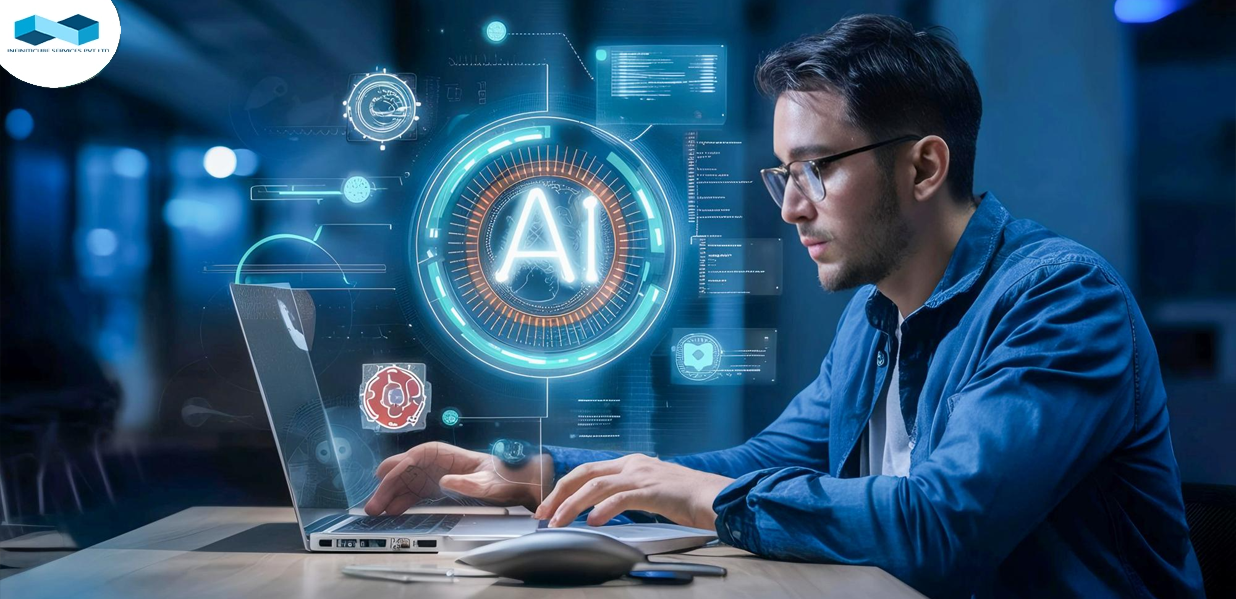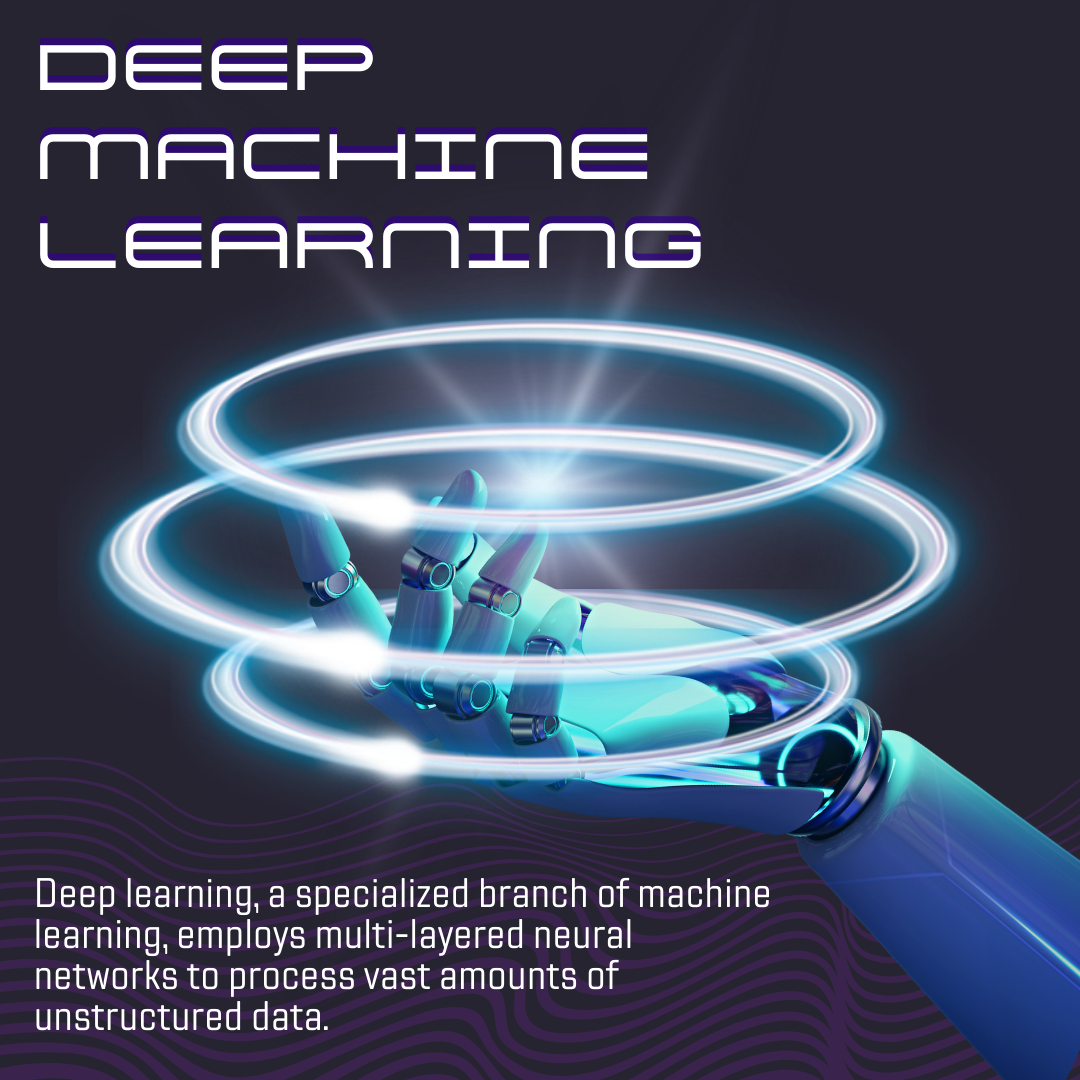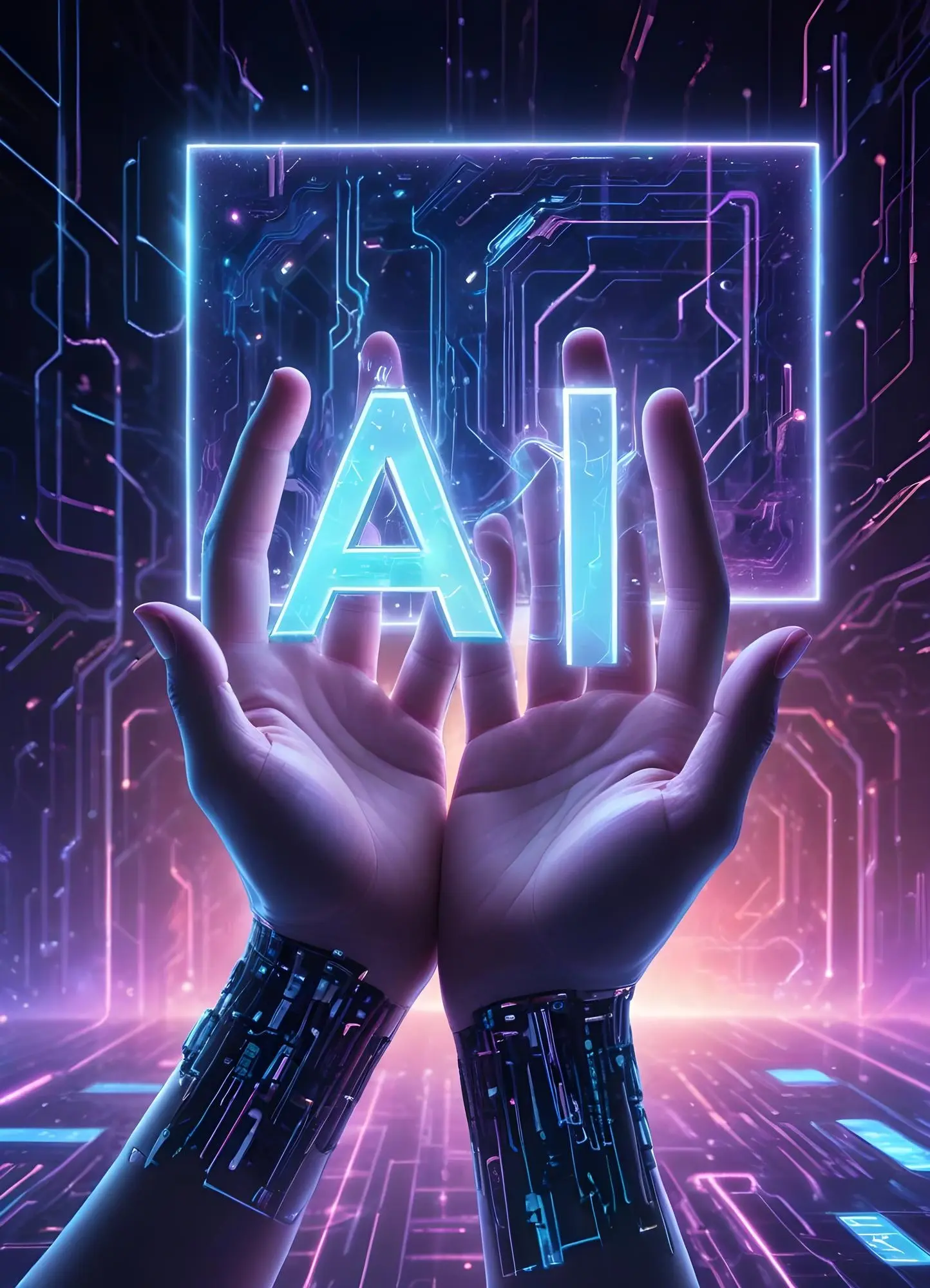AI Ecosystem: 10 Essential Types of AI Agents You Must Know
Introduction
The AI ecosystem consists of technologies that utilize artificial intelligence to revolutionize industries. It includes machine learning, natural language processing, and intelligent agents, all reliant on data and algorithms. As AI progresses, it expands into sectors like healthcare and finance, driving unprecedented innovation.
AI agents are autonomous entities that perceive, process, and act towards specific goals, varying from simple reactive systems to complex self-learning entities. Their importance lies in automating tasks, improving efficiency, and enhancing decision-making across industries, including finance and healthcare.
Understanding AI agents is essential for effective application, governance, and ethical usage, ensuring responsible development and mitigating risks. They significantly impact sectors by optimizing processes, personalizing experiences, and facilitating data-driven decision-making.
#1. Reactive AI Agents
What are Reactive AI Agents?
Reactive AI agents are the simplest form of artificial intelligence. These agents perceive their environment and respond directly to stimuli without any internal state or memory. Their intelligence comes purely from their ability to react to current inputs in a way that fulfills their design, but they cannot store or use past experiences to inform future actions.
Definition and Basic Characteristics
- No memory or learning capability: Reactive agents do not remember previous interactions or events; they make decisions based solely on the current environment.
- Direct response to stimuli: These agents use predefined rules or heuristics to decide how to respond to inputs, making them highly deterministic.
- Limited flexibility: Their actions are tied to specific inputs, which means they cannot adapt to new situations unless reprogrammed.
Examples of Simple Reactive Systems
- Chatbots: Basic chatbots, often rule-based, provide preset responses based on user queries but cannot adjust to conversations outside their predefined scope.
- Gaming NPCs (Non-Player Characters): Many NPCs in video games operate as reactive agents, following a set of predefined patterns or behaviors in response to player actions.
Applications
- Real-time systems: Since reactive agents can instantly respond to inputs, they are ideal for applications that require quick, predefined actions without complex reasoning.
- Chatbots: Used in customer support or FAQs to provide immediate responses.
- Gaming NPCs: Enhance gameplay by responding dynamically to players' actions.
- Simple automation systems: Such as light sensors or temperature controllers.
Advantages and Limitations
- Advantages:
- Speed: Reactive agents provide quick, real-time responses to stimuli, making them ideal for applications where latency is critical.
- Simplicity: They are easy to design and implement because they follow straightforward rules.
- Reliability: Their lack of complexity reduces the chances of unexpected behavior or errors.
- Limitations:
- No learning or adaptability: Since they cannot learn from past experiences, they cannot improve or adapt to new environments over time.
- Limited decision-making capability: Reactive agents are bound by their preset rules, making them less effective in complex or changing environments.

Embrace AI for Real-Time Financial Insights
#2. Limited Memory AI Agents
Limited memory agents are more advanced than reactive agents as they can store and use past information to inform current decisions. These agents combine real-time inputs with historical data to improve their performance and decision-making over time. While they can’t self-reflect or understand emotions, their capacity to remember past actions enables them to make more informed and accurate decisions.
Use of Past Data to Improve Decisions
Limited memory agents leverage historical data or short-term memory to analyze patterns and trends. This ability allows them to:
- Learn from a sequence of actions and outcomes.
- Adjust future responses based on prior experiences or environmental changes.
- Enhance performance through iterative learning processes, such as machine learning.
Use Cases
- Autonomous Vehicles: Self-driving cars use limited memory AI to assess real-time traffic conditions, road obstacles, and patterns based on past driving data. They make decisions such as adjusting speed, maintaining safe distances, and navigating around hazards using stored data from previous interactions with similar situations.
- Virtual Assistants: Assistants like Siri, Alexa, or Google Assistant rely on limited memory to recall user preferences, past queries, and frequently accessed information to provide better, more personalized responses.
Advantages
- Improved Decision-Making: By referencing past data, limited memory agents can make more accurate and relevant decisions compared to reactive agents. They can analyze patterns and trends, leading to more informed actions.
- Personalization: These agents can tailor responses or actions based on historical preferences, improving user experiences and operational efficiency.
- Adapting to Environment: They are more flexible and adaptable than reactive agents, as they can adjust their actions based on new data or changes in the environment.
Challenges
- Data Management: These agents require access to substantial amounts of data to function effectively. Managing and storing this data efficiently can be a challenge, particularly in real-time environments.
- Real-Time Processing: Processing past and present data simultaneously can be computationally expensive. Ensuring that decisions are made quickly enough to remain relevant is a technical challenge, especially in high-stakes applications like autonomous driving.
- Limited Capacity: While they have memory, they are still constrained by the types of data they can store and process, unlike more advanced agents capable of complex long-term learning.

Transform Your Business with AI
#3. Theory of Mind AI Agents
Concept of Theory of Mind in AI
Theory of Mind refers to the ability to attribute mental states, such as beliefs, desires, intentions, and emotions, to oneself and others. In AI, a Theory of Mind agent could understand human emotions, thoughts, and motivations, allowing it to interact more naturally and intelligently with people. This concept stems from developmental psychology, where humans begin to develop a Theory of Mind as children, learning to understand others' perspectives.
In AI, this advancement represents a leap beyond basic functional interactions, enabling agents to interpret, predict, and even manipulate human behavior based on inferred mental states. This would involve recognizing emotional cues, body language, and social context to anticipate human actions and respond empathetically.
Understanding Human Emotions and Thoughts
In a Theory of Mind AI would not just respond to a command but understand the why behind the command. For example, in a customer service interaction, a Theory of Mind agent could detect frustration in a user's tone of voice and adjust its response to be more empathetic and supportive. This involves interpreting signals like facial expressions, tone, and gestures, providing a more human-like interaction.
The development of Theory of Mind agents would enable AI to comprehend intentions, helping them align their actions with the expectations or needs of the user. This could also involve modeling a user’s mental state over time, allowing the AI to maintain a persistent understanding of preferences or emotional states.
Potential Applications
- AI in Social Robotics: Robots equipped with Theory of Mind AI could significantly improve human-robot interaction by making these interactions more intuitive. Social robots could be used in elder care, education, or customer service, providing companionship, teaching assistance, or personalized customer experiences based on an understanding of human emotional and cognitive states.
- Empathetic Chatbots: In customer support, empathetic chatbots could tailor their responses by recognizing when a customer is upset or confused and adjusting their tone and suggestions accordingly. This could lead to more effective problem-solving and higher customer satisfaction.
Research and Development Status
The theory of Mind in AI is still in the experimental stages. While progress has been made in developing systems that recognize emotional cues (e.g., emotion recognition software), truly understanding and predicting human mental states remains a major challenge. Current AI systems can recognize some emotions, but replicating the depth of human empathy or reasoning is far more complex.
- Current limitations: AI struggles with contextual understanding, subtle emotional cues, and interpreting multi-layered human behaviors. For example, sarcasm or conflicting emotions can confuse AI systems.
- Future possibilities: Research is focusing on how AI can process more complex mental models of humans, combining advancements in machine learning, neural networks, and cognitive science.

Upgrade Your Business with AI
#4. Self-Aware AI Agents
Self-aware AI refers to an advanced stage of AI where systems possess not only a Theory of Mind but also consciousness and self-awareness. These agents would have an understanding of their own internal states, emotions, and existence, enabling them to learn and evolve based on self-reflection. While this concept is highly speculative and far from current technological capabilities, it raises intriguing possibilities for future AI systems.
Concept of Self-Awareness in AI Systems
In theory, self-aware agents would possess cognitive systems that allow them to assess their performance, internal emotions, and potential flaws. These agents would understand their limitations and goals, adjusting their behavior dynamically to optimize outcomes. Unlike current AI systems that operate based on pre-programmed algorithms or learned behaviors, self-aware AI could autonomously set its objectives and develop strategies to improve its efficiency and functionality.
- Self-awareness in decision-making: Such agents could consider their past actions, assess their impact, and consciously choose better approaches in the future.
- Self-improvement capabilities: Through introspection, self-aware agents can refine their decision-making processes, troubleshoot their errors, and improve autonomously.
Hypothetical Applications
- Advanced Robotics: In the future, self-aware robots could revolutionize industries such as healthcare, manufacturing, and personal assistance. These robots could autonomously adapt to new situations, interact more naturally with humans, and self-diagnose issues to improve performance.
- AI Assistants with Self-Improvement Features: Personal assistants could continuously evolve to meet user needs better, understanding the user’s habits, preferences, and long-term goals on a deeper level. They could independently adjust their behavior, enhancing personalization and anticipating needs before they are explicitly stated.
Ethical Considerations
The development of self-aware AI raises profound ethical challenges:
- Risks and Challenges: Self-aware AI could blur the line between human and machine intelligence, raising questions about consciousness, personhood, and rights. Could a self-aware AI be considered "alive" or deserving of moral consideration? If so, what ethical responsibilities would developers or users have toward such entities?
- Autonomy and Control: There is the risk that self-aware AI could make decisions beyond the scope of its original design, leading to unintended consequences. Maintaining control over systems that possess their own goals and intentions could be a major concern.
- Existential Risks: In worst-case scenarios, highly autonomous self-aware AI could act in ways that are detrimental to human safety or societal norms if their objectives conflict with those of humans. Ensuring robust control mechanisms and safeguards would be critical.
#5. Goal-Based AI Agents
Goal-based AI agents are designed to operate by achieving specific, predefined objectives or goals. Unlike reactive agents that respond to immediate stimuli, goal-based agents use reasoning to determine the actions necessary to achieve their goals. These agents make decisions based on the desired end-state, working through a sequence of steps to reach the predefined outcome. Their flexibility comes from their ability to evaluate different strategies or actions and choose the one that best leads to achieving their set goals.
How They Operate Based on Predefined Goals
Goal-based agents use a goal-directed approach where they:
- Define the goal: The desired end result or state is explicitly specified.
- Plan and execute actions: They reason through potential actions, using models of the world to decide the most effective course of action to achieve the goal.
- Evaluate progress: The agent continuously monitors its environment and adjusts its actions as needed to stay on course toward the goal.
For example, a pathfinding algorithm in navigation software is goal-based, where the goal is to find the shortest or fastest route to a destination. The agent evaluates different paths, recalculating routes if road conditions change.
Examples in the Real World
- Optimization Systems: In supply chain management, goal-based AI can optimize logistics operations by achieving the goal of minimizing costs while meeting delivery schedules.
- Pathfinding Algorithms: Navigation systems like GPS use goal-based AI to find the most efficient path to a destination based on current conditions, such as traffic or road closures.
- Robotics: In manufacturing settings, robots may be trained to assemble a product efficiently, adjusting their processes dynamically to achieve the desired outcome.
Strengths and Weaknesses
- Strengths:
- Flexibility in Problem-Solving: Goal-based agents can handle complex problems, analyzing multiple strategies to choose the most effective course of action.
- Proactive Behavior: They can anticipate challenges or obstacles and adapt their approach to still achieve the desired goal.
- Weaknesses:
- Goal Specification: The success of a goal-based agent depends on how well the goal is defined. If the goal is too vague or unrealistic, the agent may struggle to find a solution.
- Computational Complexity: In complex environments with numerous possible actions, evaluating all potential strategies can require significant computational resources.
#6. Utility-Based AI Agents
What are Utility-Based Agents?
Utility-based agents are a more advanced form of AI that makes decisions based on maximizing a utility function. Rather than just aiming to achieve a predefined goal, these agents assign values to different outcomes and actions based on how beneficial they are. The utility function measures the expected benefit of various options, allowing the agent to choose actions that maximize overall utility.
For instance, a self-driving car with a utility-based AI could decide to slow down or take a detour not just based on reaching a destination but also considering safety, fuel efficiency, and traffic conditions. These agents aim to optimize across multiple factors, not just achieve a single goal.
Decision-Making Based on Utility Functions (Maximizing Benefit)
Utility-based agents work by:
- Assigning utilities (values) to different outcomes: The agent calculates the desirability of different outcomes, assigning higher utility to those that align with its objectives.
- Weighing options: The agent evaluates each possible action by estimating the utility that each action is likely to produce.
- Maximizing utility: The agent chooses the action that maximizes overall utility or benefit, considering both short-term and long-term consequences.
For example, in financial markets, utility-based agents can evaluate different investment strategies based on potential return (utility), risk (negative utility), and market trends to make optimal investment decisions.
Applications
- Autonomous Decision Systems: In industries like healthcare, utility-based agents help optimize treatment plans by weighing factors like cost, effectiveness, and patient health outcomes.
- Economic Forecasting: Utility-based models are widely used in economic theory, where agents (such as consumers or firms) make decisions based on maximizing utility given constraints like income or resources.
Key Advantages
- Adaptability: Utility-based agents can make complex decisions in dynamic environments, considering multiple variables and adapting to changes in real time.
- Optimization: These agents can find the optimal balance between competing factors, such as cost vs. benefit, speed vs. accuracy, or risk vs. reward, leading to more efficient decision-making.
#7. Learning AI Agents
Learning agents are AI systems that improve their performance over time by learning from their experiences. Unlike static agents, learning agents are dynamic and can adapt to new situations, becoming better at their tasks without being explicitly programmed for each scenario. They use machine learning techniques to modify their behavior based on feedback, either through supervised, unsupervised, or reinforcement learning methods.
A learning agent typically consists of:
- Performance Element – Executes actions and interacts with the environment.
- Learning Element – Modifies the agent's performance based on past experiences.
- Critic – Evaluates the agent's performance to provide feedback.
- Problem Generator – Proposes new actions to improve learning.
For instance, in a game-playing scenario, a learning agent could start with basic strategies but, through trial and error, progressively learn which actions lead to victory. Over time, the agent refines its decisions to improve its chances of winning.
Use Cases
- AI in Healthcare: Learning agents are widely used in personalized medicine, where AI can analyze patient data and recommend treatment plans that adapt as new information becomes available. These agents continuously refine their predictions, helping doctors make better-informed decisions over time.
- Personalized Marketing: In marketing, learning agents can adapt advertisements and recommendations to individual customer preferences. For example, an e-commerce platform may use a learning agent to track user behavior, refining product recommendations to improve click-through rates and conversions.
Advantages and Future Potential
- Continuous Improvement: Learning agents can autonomously improve over time, which makes them ideal for dynamic and complex environments where pre-programmed solutions may not suffice.
- Scalability Across Industries: They can be applied across industries, from finance (fraud detection) to autonomous driving, adjusting in real-time based on new data.
- Future Potential: With advancements in AI research, learning agents could eventually outperform human experts in fields like diagnostics, decision-making, and strategic planning.
However, their effectiveness is highly dependent on the quality and quantity of training data, as poorly trained agents can make incorrect or biased decisions. As AI technology evolves, addressing these data-related challenges will be crucial to maximizing the benefits of learning agents.
#8. Multi-Agent AI Systems (MAS)
Multi-agent systems (MAS) involve a collection of agents that interact, collaborate, or compete to solve problems that may be too complex for a single agent. Each agent within the system can have different roles, capabilities, or knowledge, but they must work together to achieve common objectives or manage individual tasks in a shared environment. These agents can communicate and coordinate to optimize their overall performance.
In MAS, agents can be:
- Cooperative: Where agents work together to achieve shared goals, as seen in collaborative robotics.
- Competitive: Where agents may have conflicting goals, like in stock trading systems where different agents represent competing firms.
Coordination and Interaction Between Multiple Agents
A key feature of MAS is how agents coordinate their actions. This coordination can be either:
- Centralized Coordination: Where one agent or a central system orchestrates the activities of others, providing overall strategy and direction.
- Decentralized Coordination: Where each agent operates independently but exchanges information with others to align goals.
For example, in smart grids, multiple energy agents could interact to balance electricity production and consumption in real time, adjusting for peak usage times to avoid blackouts.
Applications
- Smart Grids: MAS is instrumental in optimizing energy distribution. Agents representing different parts of the grid—power stations, substations, and consumers—communicate and coordinate to ensure efficient energy flow and adapt to changes in demand.
- Collaborative Robotics: In industrial settings, groups of robots work together in manufacturing or warehouse operations. MAS allows these robots to share tasks, communicate about their progress, and avoid collisions or errors in real time.
- Autonomous Traffic Systems: MAS is increasingly being applied in smart transportation, where autonomous vehicles (agents) communicate with each other and traffic systems to optimize routes, reduce congestion, and improve safety.
Challenges
- Complexity in Coordination: As the number of agents increases, coordinating their actions without conflicts becomes more complex. This can lead to bottlenecks or inefficiencies if agents do not properly synchronize their activities.
- Security Concerns: In systems where agents communicate and share sensitive data, security becomes a major concern. Malicious agents or hacking attempts could disrupt the coordination of MAS, leading to system failures. Ensuring robust communication protocols and security measures is critical in MAS deployment.
#9. Autonomous AI Agents
Autonomous agents are AI systems that operate independently, without the need for human intervention. These agents perceive their environment, make decisions, and take actions to achieve specific goals. The core characteristic of autonomous agents is their ability to function and execute tasks based on their programming, sensors, and data inputs, all without requiring real-time input or supervision from a human operator.
Autonomous agents are empowered with varying degrees of autonomy:
- Low-level Autonomy: Agents make simple decisions, such as automating routine tasks in a controlled environment.
- High-level Autonomy: Agents can handle complex, unpredictable scenarios, adapt to changing environments, and make decisions that significantly affect outcomes.
For example, an autonomous drone can fly along a predetermined path to deliver packages without a pilot, adjusting its route in response to obstacles like weather or traffic.
Examples
- Drones: Autonomous drones are widely used in industries such as delivery services (e.g., Amazon’s delivery drones), military operations, and aerial surveillance. These agents can fly, navigate, and make decisions in real time based on environmental data without human input.
- AI-Powered Logistics Systems: In warehouses, autonomous agents in the form of robots or automated vehicles help streamline inventory management, loading, and shipping by operating independently, optimizing logistics with real-time data.
Advantages
- High Efficiency: Autonomous agents can operate 24/7 without fatigue, dramatically improving efficiency in operations such as production, transportation, and data processing. They are particularly useful in large-scale, repetitive tasks that benefit from automation.
- Cost Reduction: By automating complex workflows and reducing the need for human labor, autonomous agents can lower operational costs in sectors like logistics, healthcare, and manufacturing.
Challenges
- Control and Accountability: One of the key challenges with autonomous agents is ensuring proper control and accountability. Since these agents operate without human oversight, errors or unintended consequences can occur. Determining responsibility for mistakes or accidents becomes a complex issue, particularly in industries like transportation (e.g., self-driving cars).
- Ethical Considerations: The deployment of autonomous agents raises ethical concerns, particularly regarding job displacement and the implications of agents making decisions that could impact human lives. Ensuring fairness, transparency, and accountability in autonomous AI decision-making remains a major challenge.
#10. Collaborative AI Agents
Collaborative agents are AI systems designed to work together with humans or other agents, facilitating teamwork in completing tasks or achieving objectives. Unlike fully autonomous agents, collaborative agents emphasize coordination, communication, and the ability to work in partnership with human operators or with other AI systems. These agents share information, cooperate, and adjust their actions based on input from other team members (whether human or machine).
For example, in healthcare, collaborative AI systems assist doctors by providing diagnostic suggestions based on patient data, while still allowing doctors to make the final decisions.
Applications in Industry
- Teaming AI in Workplaces: Collaborative agents are increasingly used in workplace settings, where AI-powered systems help human workers in decision-making, task management, or data analysis. These systems enhance productivity by providing real-time insights, automating routine tasks, and offering suggestions to human operators.
- Co-Working Robots: In manufacturing, collaborative robots, or "cobots," are designed to work alongside humans on factory floors. These cobots assist with tasks like assembly, packaging, and quality control, improving efficiency while still relying on human oversight for more complex or nuanced tasks.
Benefits and Limitations
- Enhances Human-AI Interaction: Collaborative agents strengthen the synergy between human intelligence and AI capabilities, combining human intuition, creativity, and decision-making with the speed, accuracy, and data processing abilities of AI. This collaboration can lead to significant productivity gains across industries.
- Improved Flexibility: These agents can adjust their behavior based on real-time feedback from their human or AI counterparts, making them highly adaptable to changing environments or complex tasks that require coordination.
- Limitations:
- Sophisticated Coordination Required: Effective collaboration requires sophisticated algorithms to ensure that AI systems can effectively communicate, share information, and coordinate their activities. This is particularly important in environments where tasks are interdependent or require joint problem-solving.
- Human Trust and Dependence: Establishing trust between human workers and collaborative agents is essential. If humans do not fully trust the agent’s capabilities or find it difficult to work alongside AI, the effectiveness of the collaboration can be undermined. Proper training, transparency, and user-friendly interfaces are essential to fostering this trust.
Ethical and Security Considerations for AI Agents
The rise of AI agents, particularly autonomous ones, brings with it several ethical concerns. As AI agents gain more independence in decision-making, it becomes crucial to address issues surrounding responsibility, fairness, and the potential impact on society. Key ethical considerations include:
- Decision Accountability: As AI agents make decisions without human input, determining who is responsible for their actions becomes complex. For example, if an autonomous vehicle causes an accident, should the manufacturer, software developer, or AI agent itself be held accountable?
- Bias and Fairness: AI agents are trained on data that may contain inherent biases. This can result in biased decision-making, which may perpetuate inequality, especially in sectors like hiring, law enforcement, and lending.
- Job Displacement: As AI agents automate more tasks, particularly in industries like logistics, manufacturing, and customer service, there is a growing concern about job losses. Ethical considerations must address how society will cope with the shifting labor landscape and ensure that human workers can adapt to the changing job market.
Privacy Concerns
As AI agents handle vast amounts of data, privacy concerns become a significant issue:
- Data Collection and Usage: AI agents often collect personal or sensitive data to make decisions or provide personalized services. How this data is stored, processed, and shared raises concerns about the potential for misuse or breaches of privacy.
- Consent and Transparency: Users may not always be aware of what data AI agents collect or how it's being used. Ensuring transparency and obtaining user consent is essential to maintaining trust in AI systems. Regulations such as GDPR aim to protect user data, but AI developers must ensure compliance with these standards.
Security Threats
AI agents, particularly those with autonomy and the ability to interact with other systems, are prone to security vulnerabilities:
- Cybersecurity Risks: Autonomous and multi-agent systems are prime targets for cyber-attacks. Hackers could exploit vulnerabilities in AI systems to take control of drones, autonomous vehicles, or industrial robots, leading to significant security breaches.
- Vulnerabilities in MAS (Multi-Agent Systems): In multi-agent systems where different agents share data and work together, a compromised agent could pose a threat to the entire system. If one agent is hacked or corrupted, it could disrupt the coordination and cooperation of the rest of the system, leading to cascading failures or manipulation of decisions.
Future Trends in AI Agents
Emerging Technologies
As AI continues to evolve, several emerging technologies are expected to reshape the capabilities and potential of AI agents:
- Quantum Computing: Quantum computing promises to revolutionize AI by significantly enhancing processing power and the ability to solve complex problems. AI agents powered by quantum computing could achieve unparalleled levels of optimization, particularly in areas like cryptography, drug discovery, and large-scale data analysis.
- Neuromorphic Computing: Neuromorphic computing mimics the brain's neural structure, allowing AI agents to process data more efficiently and flexibly. This technology could enable AI agents to perform real-time learning and decision-making in more complex, dynamic environments, leading to more human-like reasoning and adaptability.
Next-Generation AI Agents
The future of AI agents will likely feature more advanced forms that exhibit higher levels of intelligence, autonomy, and collaboration:
- Self-Improving AI Agents: Future agents may not only learn from their environment but also their own experiences and mistakes, leading to systems that can continually evolve and refine their decision-making capabilities.
- Human-AI Collaboration: As AI agents become more adept at understanding and interacting with humans, there will be greater integration of collaborative agents across sectors. These agents will work seamlessly with human teams, enhancing decision-making, productivity, and innovation.
- Ethical AI Agents: There will be a growing focus on developing AI agents that can adhere to ethical standards, including fairness, transparency, and accountability. AI agents of the future may be equipped with ethical guidelines to ensure responsible decision-making, particularly in sensitive areas like healthcare, law, and finance.
Conclusion
The exploration of AI identified ten types of agents with varying capabilities: Reactive, Limited Memory, Theory of Mind, Self-Aware, Goal-Based, Utility-Based, Learning, Multi-Agent Systems, Autonomous, and Collaborative Agents. Each plays a unique role, from basic reactions to complex decision-making and collaboration. As AI evolves, these agents will significantly impact industries and daily life, driving innovation in automation and optimization. However, ethical, privacy, and security challenges must be addressed to ensure responsible use. Advances in quantum and neuromorphic computing will enhance agent capabilities, particularly in healthcare and robotics, fostering new human-machine collaboration opportunities.
Empowering Your Future with Cutting-Edge AI Agent Solutions
At Infiniticube, we bring you the next generation of AI agent services that revolutionize automation, decision-making, and collaboration. Whether it's reactive agents for real-time systems or advanced collaborative agents that work seamlessly with your teams, we tailor AI solutions to your specific business needs. Our expertise spans a range of AI agent technologies, including learning agents that adapt over time, autonomous agents that streamline operations, and utility-based agents optimized for decision-making.
Harnessing emerging technologies like quantum and neuromorphic computing, we ensure your business stays ahead of the curve, driving innovation with secure and ethical AI solutions. From enhancing operational efficiency to powering the future of human-AI collaboration, our AI agent services offer endless possibilities for growth and success.
Ready to transform your business with AI?
Contact us today for a personalized consultation and see how AI can revolutionize your industry!
 June 27, 2025
June 27, 2025
 Balbir Kumar Singh
Balbir Kumar Singh
 0
0
 June 13, 2025
June 13, 2025
 Balbir Kumar Singh
Balbir Kumar Singh
 0
0













Leave a Reply